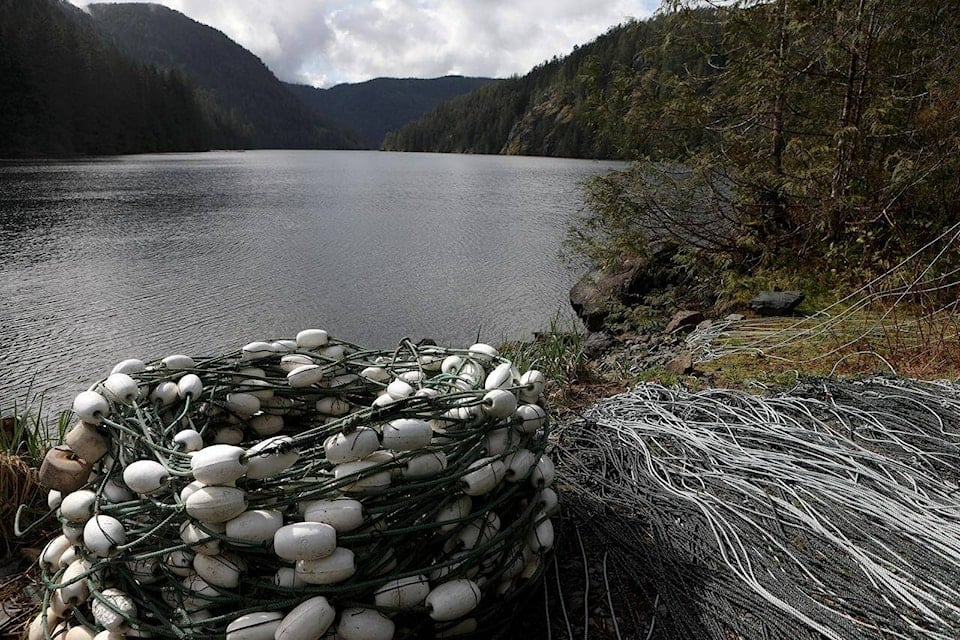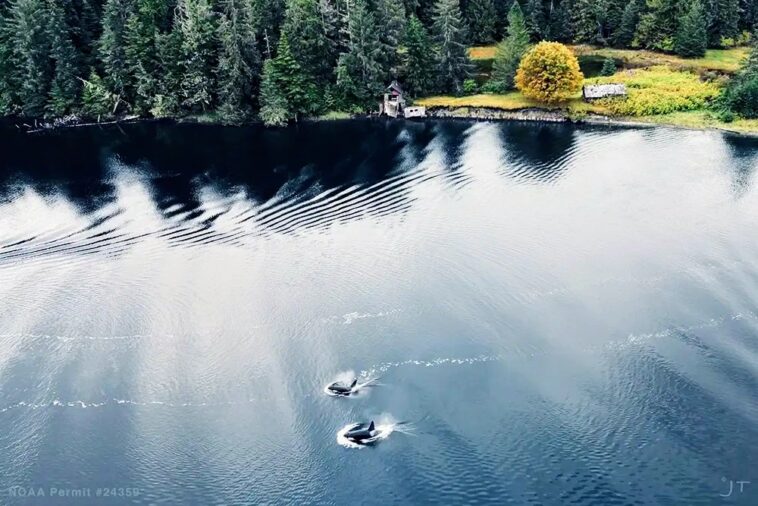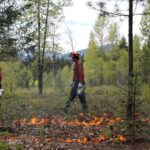The harrowing story of the young orphaned orca kʷiisaḥiʔis (Brave Little Hunter) trapped in a Vancouver Island lagoon captured the hearts of West Coasters this spring. The calf was stranded after her mother became beached and later died in the small inlet near Zeballos. A team of rescuers then spent weeks trying all manner of tactics to coax the two-year-old whale out. Finally, on April 26, 2024, the calf made her escape.
One of the strategies employed by the expert rescuers, including Jared Towers, Executive Director of Bay Cetology, was to broadcast recordings from related whales that she might recognize, like her great aunt. The playback of whale recordings had worked previously in similar rescues led by Towers, putting it at “the top of the list for response strategies,” he said in an interview with The Skeena.
Towers had been called to assist in a similar situation when two killer whales became trapped in southeast Alaskan waters in August 2023. The pair of male Bigg’s whales swam into a tidal lagoon off Barnes Lake at high tide, likely hunting seals or sea lions, and found themselves stranded once the water receded, just like Brave Little Hunter.
The 16-year-old juvenile and 42-year-old adult males likely would have starved without quick intervention.
“The reason why it was at the top of the list for the situation in Alaska was because of how well it worked during a different entrapment response I led in Comox Harbour in 2018.”
Jared Towers, Executive Director of Bay Cetology
Towers successfully identified the two male orcas as T051 and T049A2 using his photo database Finwave, and knew that their pod traveled with five female orcas. He also knew that if he could get high-quality recordings of female orcas to play for them, he might be able to draw the pair out.
“The reason why it was at the top of the list for the situation in Alaska was because of how well it worked during a different entrapment response I led in Comox Harbour in 2018,” he explained. In that case, his team successfully lured out a male killer whale from the Vancouver Island harbour after he was caught playing with traps and dragging boats out by their anchors.
In Alaska, Towers worked with the Orca Conservancy and the National Oceanic and Atmospheric Administration to coordinate a multi-prong rescue response. The team had tried tactics also used with Brave Little Hunter, including guiding the whales with a hukilau, a traditional Hawaiian fishing net, and striking metal oikomi pipes, hoping the loud hollow noise would encourage the whales to exit.

After an unsuccessful six weeks, Towers and his team decided to test the recordings on the whales. They set a speaker into Barnes Lake off a flotilla and broadcast the calls of the five female orcas. The male whales immediately responded by breaching and vocalizing and followed the vessel out until one of them became entangled in bull kelp.
“Each of these scenarios had similarities but were different in some ways too.”
Jared Towers, Executive Director of Bay Cetology
Once it finally freed itself, both orcas retreated back to the lake. The rescuers were undeterred and returned the next day at high tide to play the recordings again. This time, they succeeded: the two orcas followed the boat out the easterly channel of the lake and into the open ocean.
“Each of these scenarios had similarities but were different in some ways too,” Towers explained. “While the Comox and Barnes Lakes scenarios were geographically quite different, they each involved mature males, and while the Barnes Lake and Zeballos entrapment involved different sex and age classes of killer whales, they were geographically similar in the sense that the only time the whales could get out was at or near high slack.”
So why was the whale recording tactic unsuccessful in Zeballos? Towers said it would be reasonable to consider that the orcas’ age and sex may factor in response to playbacks, with Brave Little Hunter being a young female calf, compared to the older males in the other two scenarios. Ultimately, he said there is much we do not understand about this highly experimental strategy.
“Playbacks are psychologically invasive and, in my opinion, should only be experimented with in situations of life and death for these kinds of animals.”
Jared Towers, Executive Director of Bay Cetology
“I don’t have a solid theory on why the recordings didn’t work in Zeballos and am OK with not knowing for now,” Towers told us. “Playbacks are psychologically invasive and, in my opinion, should only be experimented with in situations of life and death for these kinds of animals,” he said.
Although the risky playback strategy was unsuccessful with Brave Little Hunter, it saved the lives of the two male orcas at Barnes Lake last summer. Unfortunately, that pair will likely not be the last of these incredible creatures to need Towers and his rescue expertise in BC coastal waters.




